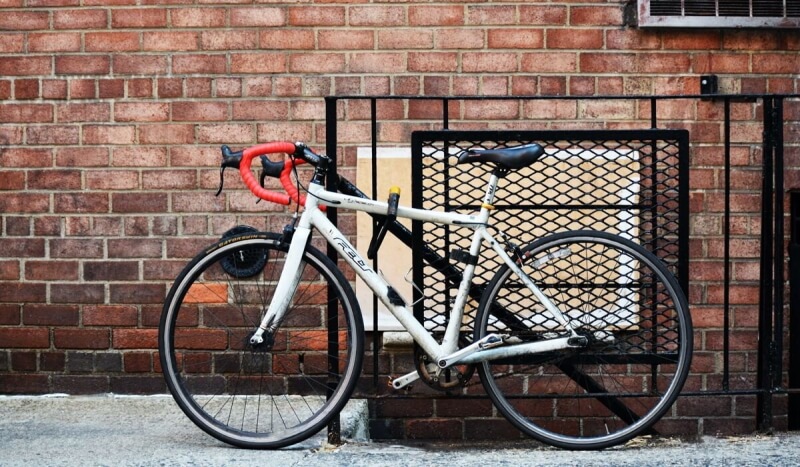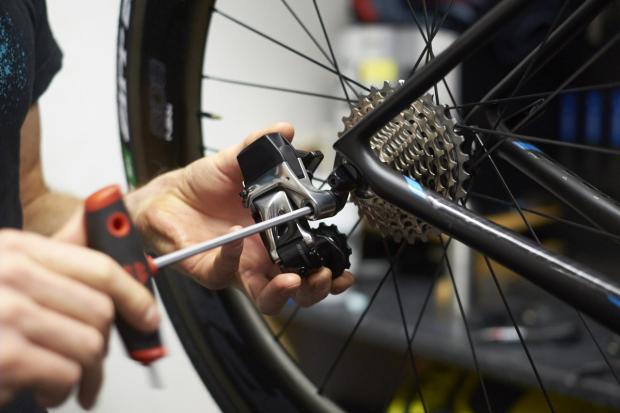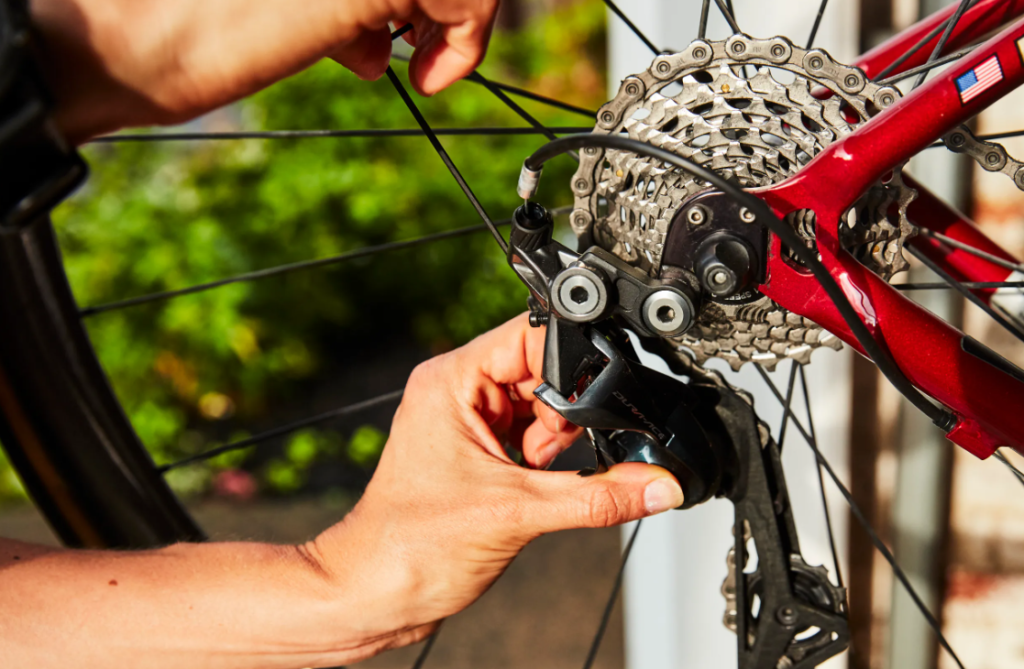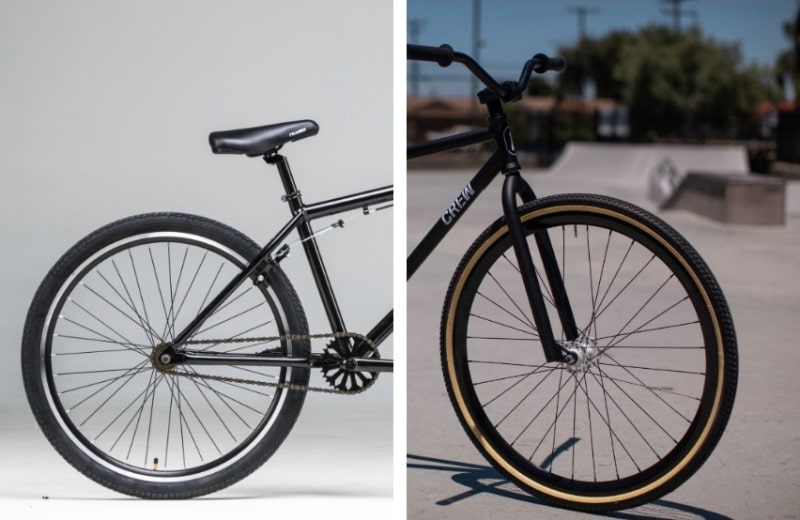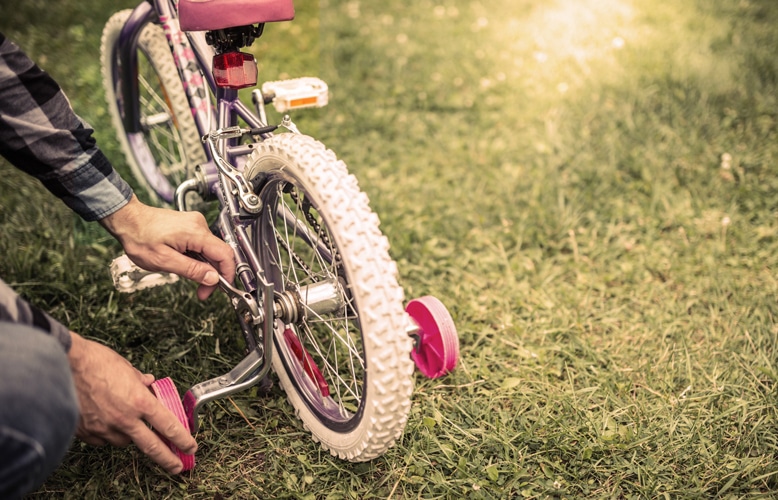- Trails
-
Bikes
-
Gear
-
Tips & Tricks
-
About us


Anyone who has ridden a bike will know that cycling uphill is the hardest part. Our legs have to work a lot harder to travel the distance and if you are out of shape or haven’t ridden a bike in a while, you may be unprepared for the strain. Having a bike with multiple gears can help as you can shift the bike to work with you, instead of against you. In this article, we’ll provide you with some tips to make cycling uphill a lot easier. We’ll also answer a few questions you may have about the process and include a few surprising benefits of this exhausting endeavor. Hills are unavoidable while cycling, so the more prepared you are, the easier it will be.
If you are planning on biking uphill, you should first be aware of how to do so. First, the right bike is key. Cruiser bikes, which only have one gear, are not meant for uphill cycling. Instead, a sturdy mountain bike is key. Once you know how to bike uphill, you can then put the theory into practice.
Climbing hills may just be the hardest part of cycling. However, by following these tips, you can act like a pro in no time.
Thanks to the Internet, it is easier than ever to plan ahead for a cycling journey. Whether you are traveling on a trail or a road, you can find maps that show not just the distance but the incline. Furthermore, if you are mountain biking, any major trail will have a rating to tell you the difficulty rating.
You can look ahead and know when to expect the hills. This will allow you to plan for snacks, figure out speed, and know when to take breaks.
Talking to other people who have ridden the same course is also a key part of planning. Whether it is with friends, a cycling group, or even through an online forum, you can find out more about the path and what to expect.
Think of cycling as a marathon, not a sprint. Whatever distance you think you will be traveling, you need to go slow and steady so you don’t run out of steam at the end.
This is true even of hills. You may want to go hard in the hopes that the hill will be over faster but it’s hard to gauge the distance so you might put too much effort into the first part and then lose your energy halfway through.
Try to go slower than you want to at the beginning. Then, as you climb more, you can decide to gear up or push the pedals harder to get you to the top.
Any time you can help yourself out on a hill, even if it is a small amount, the better. Try to use nature’s gravity to build up speed before you hit a hill. Then, you can use this momentum to help propel you up the hill. It won’t last for very long but again, even if you have a bit of extra help, it will take some of the pressure off your legs.
The best mountain bikes will have a large range of gears that you can use. Lower gears propel your bike at a slower rate but don’t take as much effort to pedal. These lower gears are designed for cycling uphill.
It’s also best if you test your gears out ahead of time. Go through them on shorter trails so you know what to expect. You might find a medium gear that works for you but generally, lower gears are best for hills.
You can use the gears according to the length and incline of a hill. If it is steep and long, you want to use the lowest gear possible. It will be easier on your body to switch to a higher gear than vice versa.
Try not to keep your body rigid when you are cycling uphill. You might be too focused on the climb and forget to move but by shifting your body, you can create a bit of natural momentum that will take you up the hill.
So often we forget how important our breathing is. But breathing brings oxygen into our body and if we want our muscles to have enough energy, they need oxygen.
If you can, get into a rhythm where you breathe in through your nose and then out through your mouth. By breathing in through your nose, you warm the air up, which makes it easier to process. Then, when you breathe out through your mouth, you expel as much carbon dioxide as you can, which cleanses your body.
Don’t be afraid to rest some of your leg muscles by standing up during hill climbs. This takes some of the pressure off your quadriceps, which will be doing most of the work. If you can spread the effort around to other muscles, you can last longer cycling uphill.
When you stand, you can push more power onto the pedals. This makes your wheels turn faster, which gets you to the top sooner rather than later. Alternate sitting and standing to allow your body to rest and provide the most amount of power to the bike.
Keep yourself fed and hydrated before a climb. You won’t want to stop mid-climb so have a snack about 15 to 20 minutes before a major climb.
Smaller bites will make you more comfortable. The same goes for water. Take regular sips to allow your body to accept the water. You don’t want a belly slushing with water as you try to climb up a hill.
An extra pound or two on your bike might not seem like a big deal before you start cycling. But once you’re cycling uphill, it can seem insurmountable. The best gear for uphill cycling will always be as light as possible but there are a few tricks you can employ to make things easier.
First, start by organizing what you need to bring. Lay everything you think you need on a table and go through the items one by one. Do you need your whole wallet or just a driver’s license and a credit card? Similarly, do you need every key on your keychain or just your car key?
Where you can, use your bike to your advantage. For example, while you should wear a water vest to keep hydrated, you can also place water bottles on a holder on your bike. This way you can spread the weight of your water over the frame of the bike and not just on your body.
Yes, a bike is meant to be ridden but sometimes hills are just too steep and too long. Always start by gearing down but if even this is too strenuous, it’s okay to get off your bike and push it off.
You use different leg muscles when pushing and walking rather than riding, so this will give your body a chance to take a rest. Plus, if you have more climbs in your ride, it will allow you to rest up so you don’t have to push later on.
We all know that practice helps us achieve goals. Whether we put that into motion, however, is another thing. Most mountain bike trails are marked and have a rating system. If you are a beginner, stick to the easiest ride first so you can get a feel for the terrain. Then, you can go on more easy trails for longer periods of time.
After this, work up to more advanced trails. Push yourself when you can but remember to listen to your body if it becomes too much.
Training will help you on long rides, especially if there are steep uphill sections. Strength training will improve your muscles and you can also try some cross-training.
Don’t let bad weather stop you from practicing. Investing in an indoor exercise bike like the DMASUN will allow you to ride, even if it is cold, snowing, or dark outside. Many models are compact and most will allow you to vary your speed and resistance for more challenging practice.
You know yourself best, so think about what has helped keep you motivated in the past. Then, apply this to cycling.
Maybe you work better in a group. If this is the case, ask some friends or join up with local cycling clubs. Having the accountability of needing to show up to an event will force you to go, even if it is early in the morning or your muscles are sore.
You can also think about a reward system. Maybe you really like donuts but don’t eat them because of the extra calories. After a long bike ride, pick your favorite donut to eat. You’ll have burned enough calories to allow the indulgence.
You can also think about intrinsic motivational exercises Trusted Source Intrinsic Motivation Theory: Overview, Factors, and Examples Learn about intrinsic motivation and how it can be applied to aspects of your life to effectively improve performance and motivation. www.healthline.com . Pick a trail ride that is challenging, commit to a date, and then train for it. Having a goal will allow you to work toward something achievable.
It’s easy to prepare yourself for a long bike ride but once you’re in the middle of it, there are a lot more factors to consider. Depending on your route, a hill might not come up right away. By this time, your body will be sore, your brain will be fatigued, and you might forget everything you have planned for.
If you are someone who is especially prone to anxiety, you might want to do a trial run of your mountain trail. Doing so will give you more accurate expectations. The best way to do a trial run is with an electric bike. There are plenty of the best electric mountain bikes under $3000 that you can find. The electric motor can assist you on the hills and will allow you to decide if you are up for the terrain on a regular bike at a later date.
Beginners can get swept up in emotions. You may be mentally and physically exhausted when you reach a hill, which can lead you to panic. This is especially true if you look up and see a long, very steep trail ahead of you.
Other factors can cause you to panic, such as your mountain bike weight, the amount of food you have eaten, and your expertise.
Whatever you do, focus on small steps. Instead of thinking about how long you have to cycle uphill, take it a few minutes at a time. Focus on landmarks such as cliffs or large trees and just work to get to that distance.
Above all else, know that you can stop whenever you need to. Whether it’s to stop for water or to walk and push your bike, go at your own speed.
The lowest gear is the best bet for a steep climb. It’s far easier to move to a higher gear than it is to go to a lower gear.
Remember to breathe evenly. Work on taking deep belly breaths Trusted Source Learning diaphragmatic breathing - Harvard Health The diaphragm, a dome-shaped muscle at the base of the lungs, plays an important role in breathing though you may not be aware of it. When you inhale, your diaphragm contracts (tightens) and moves downward. This creates more space in your chest cavity, allowing the lungs to expand. www.health.harvard.edu to remain calm. If you can, focus on the sounds around you such as birds chirping or the wind in the trees. If you are with a friend, ask them to help you focus by counting so you can get your breath back to normal.
Your body needs fuel to work. If you don’t have that fuel in you, your muscles will become fatigued. The best-case scenario is that it takes you a long time to cycle to the top of a hill or that you need to dismount from your bike and walk it up. However, the worst-case scenario is that your muscles seize up and you are stranded in the middle of a forest trail.
A mixture of slow-release foods and fast-action foods will help you power through long cycling trips. To get the most out of these foods, know when to start eating.
Before you cycle, start with a nutritious meal. This should be full of slow-release foods, such as proteins and complex carbohydrates Trusted Source Complex carbohydrates: MedlinePlus Medical Encyclopedia Image Complex carbohydrates are made up of sugar molecules that are strung together in long, complex chains. Complex carbohydrates are found in foods such as peas, beans, whole grains, and vegetables. medlineplus.gov . Eggs and oatmeal are two good breakfast options.
You should also pack snacks for longer cycling trips, such as protein bars and trail mixes. These will give your body more fuel as your previous meal’s calories will start to be spent.
Then, when you are 15 to 20 minutes out from a major hill climb, you can eat a quick-release snack. There are many gels and gummies that release sugar to your body. This sugar won’t sustain you for very long but can be enough of an energy jolt to get you through a hard uphill.
Small, frequent snacks while cycling are much better than large amounts at one time. You don’t want to feel sick from the weight of a giant protein bar in your stomach.
For the average person who is not overweight, you can burn up to 500 calories in just 30 minutes of biking uphill. That’s quite a workout!
Now, that number can vary greatly as it depends on the steepness of the hill, what gear you are using on your bike, and your overall fitness level. You should also take into consideration your basal metabolic rate (BMR) which is the number of calories you burn when you are resting.
There are many calorie trackers that monitor your oxygen levels that are fairly accurate. So, if you are curious about just how many calories you burn while cycling uphill, we suggest investing in one of these for a more accurate count.
Muscles become bigger by putting them in stressful situations. If you work them harder, your muscles will develop microtears. Then, if your body has enough protein, these tears will heal and your muscles will become stronger Trusted Source How to Gain Muscle: Tips, Diet, and Workout Design If you’re looking to see gains in strength, you may wonder how to gain muscle without gaining fat. Here’s a science-based breakdown of what works. www.healthline.com and larger.
Uphill cycling requires the use of different muscles in your legs than downhill cycling, mainly your quadriceps. The more you can work out this area in your legs, the larger the muscles will become.
Different leg muscles are used when cycling, depending on if you are going downhill, uphill, or on a flat surface. For uphill cycling, your quadriceps will feel the most workout. Your glutes and your calves will also engage more.
After cycling uphill, you should be sure to stretch these muscles as they may not be used to the climb.
The thrill of cycling includes both going downhill and going uphill. While cycling uphill is certainly hard, there are ways to make it easier. Make sure you practice before more advanced trips and research your route so you know what sort of incline to expect. When possible, cycle with other people as it will be more enjoyable and a better motivator. Stay hydrated and eat a mixture of slow-release foods and fast-acting foods so your body never runs out of energy. Use your gears to your advantage and if you need to take a break, that’s okay. The more you can ready yourself, both physically and mentally for cycling uphill, the more you will enjoy it.
